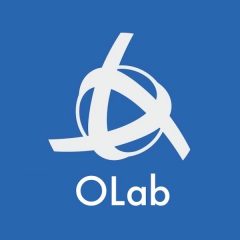What is Factored Cognition?
This is an extension of the concept that we have been building on with our approach to TTalk and DFlow for natural-language processing in OLab: the concept that you are using a variety of online tools to supplement the abilities of a human (and vice versa).
There is quite a nice description of Factored Cognition here: https://ought.org/research/factored-cognition — they make it quite easy to understand the principles.
These notes from the Ought team, who built Elicit.org, which is using a Factored Cognition approach. They have written a primer on this topic:
This primer spells out for you how you can use the Factored Cognition approach. It even provides a tool, the Interactive Composition Explorer, https://github.com/oughtinc/ice to support these experiments.
What is Faceted Cognition?
Some notes on combining the concepts from the Factored Cognition Primer, cognitive computing assistants, virtual agents, and Vernor Vinge’s Joint Entity concept.
In Rainbow’s End, the author Vernor Vinge wrote about the concept of combining your real self with your virtual self, with each entity contributing its best functions and attributes. Later in another of his books, he multiplied this out so that the joint entity had multiple instances.
Rainbows End (novel) – Wikipedia
Factoring via multiple instances
As described in the Factored Cognition Primer, why not have multiple agents to more rapidly process tasks that you would normally be able to do yourself? And note that this multiplication of instances can also be iterated.
We see this in how Elicit.org spawns multiples instances of agents to run many tasks simultaneously, using the strengths of different agents to their best advantages. For example, instead of focusing on the most powerful of the current GPT-3 Large Language Models, Davinci (which is slow and expensive, albeit more adept), it also uses the Ada, Babbage and Curie LLMs because they are a better fit for some tasks, as well as faster and cheaper. The old adage from simulation: using the best tool for the job.
Faceted vs Factored
The idea behind Faceted Cognition is that of taking a broader pespective or set of viewpoints on the tasks to be done.
As noted in Faceted Search , and Faceted Classification Systems, (brain://api.thebrain.com/dI84W6O_hg4JSsKs2Xs_vA/roVZY2XLkVeWsBpWZOUkIw/FacetedClassificationSystem), each facet presents a different face or perspective.
There is also the neat concept of [Gems](brain://api.thebrain.com/dI84W6O_hg4JSsKs2Xs_vA/1GAScpXVzU2RZ8PwpRalvg/FacetsTiersAndGemsOntologyPatternsForHypernormalisationLordAnd), which are collections of facets.
For the TADAM Project, we explored some Case Factors in clinical decision-making, as noted in that link to Gems and the associated paper. That team used Facets and Gems in an approach to hypernormalization which is now a commonly used technique in AI.
The concept of ‘Faceted’ is also a better fit with Vinge’s Joint Entities.
Using Faceted Cognition
In our notes on [[Virtual patients based on Factored Cognition]], we explore the use of multiple cognitive computing agents. This is also consistent with the philosophy that OLab has moved beyond being a virtual patient application and is now an educational research platform, supporting many different tools and modalities.
For this broader perspective, the ‘Faceted Cognition’ is also a better fit. Since these are task or agency oriented, we are now promoting the concept of ‘Factored Agents for Cognitive Educational Tasks’ (FACETS).

